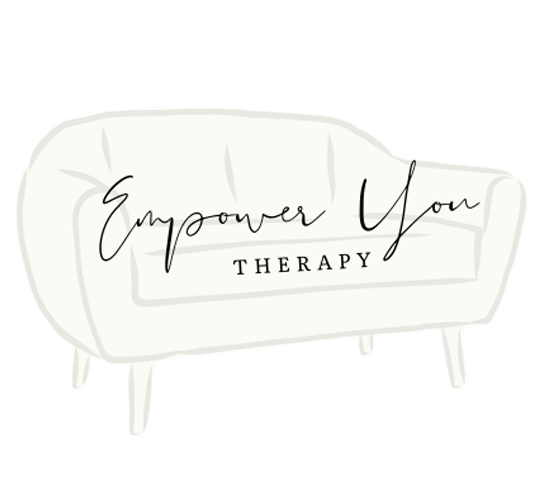Emotional pain is an inherent part of the human experience, often arising from loss, disappointment, or trauma. While it can be tempting to avoid or suppress these feelings, true healing begins when we allow ourselves to feel through the pain. This process not only helps alleviate suffering but also fosters personal growth and resilience. Here, we explore practical strategies on how to release emotional pain and embrace a healthier, more balanced life.
Practice Mindful Acceptance
Mindful acceptance involves acknowledging your emotions without judgment or resistance. By recognizing your feelings for what they are, you create a safe internal space for healing. Set aside time each day to observe your emotions as they arise, allowing yourself to fully feel them without trying to change them. This practice encourages self-compassion and helps dissipate the power that suppressed emotions hold over you. Over time, mindful acceptance fosters a sense of peace and acceptance, creating room for healing and growth, and guides you on the path of how to release emotional pain effectively.
Seek Therapy and Professional Support
Engaging in therapy provides a structured and supportive environment to explore and process emotional pain. A therapist can offer insights and strategies tailored to your specific needs, helping you navigate complex emotions and release harmful patterns. Therapists trained in techniques such as cognitive-behavioral therapy (CBT), EMDR, or acceptance and commitment therapy (ACT) can help uncover underlying issues and promote emotional regulation. Consistent therapeutic support empowers you to face emotional pain with greater resilience, guiding you on a path toward healing and understanding how to release emotional pain in a comprehensive manner.
Allow Time for Emotional Release
Setting aside dedicated time to fully experience and release emotions can prevent them from becoming bottled up. By deliberately carving out moments where you allow yourself to feel and express your emotions, you create an opportunity for emotional release. Whether it’s through crying, yelling into a pillow, or writing a cathartic letter you never send, finding safe ways to express what you’re experiencing can be liberating. This conscious acknowledgment of your feelings not only prevents emotional build-up but also honors your emotional journey, paving the way for deeper healing and insight.
Slow Down and Recognize Bodily Signals
Recognizing your body’s signals when experiencing emotional pain is crucial for releasing it effectively. Take the time to slow down and notice physical sensations, such as tightness in the chest or a knot in the stomach, that accompany your feelings. Identifying these sensations can help you understand what triggers your emotional pain and facilitate a deeper connection with your emotions. By acknowledging these physical responses, you allow them to guide you toward the root cause of your distress, providing opportunities for release and healing.
Harness Creative Expression
Creative outlets, such as journaling, art, music, or dance, provide powerful ways to process and express emotions. These activities allow you to externalize your internal experiences, offering a sense of release and relief. Writing about your feelings in a journal, for instance, can help you gain clarity and perspective while engaging in art or music can enable emotional expression without the constraints of words. Embracing creativity nurtures self-expression and intuition, promoting emotional well-being and fostering healing.
Use Visualization Techniques
Visualization techniques can be powerful tools in releasing emotional pain. Engaging your imagination, create mental images of your emotions as tangible forms or colors, and visualize transforming them or setting them free. For instance, imagine your sadness as a heavy cloud slowly dissipating in the sun, or see anger as a ball of energy that you release into the sky. Visualization can provide a creative avenue for emotional expression and release, helping to disconnect from pain’s intensity and achieve mental clarity.
Explore the Therapeutic Power of Nature
Spending time in nature offers unique benefits in healing emotional pain. The natural world provides a calming, grounding environment, enabling reflection and introspection away from daily stressors. Take walks in a park, hike in the mountains, or simply sit by a body of water to harness nature’s therapeutic power. Allow yourself to connect with the sights and sounds around you, letting them soothe and ease emotional turmoil while promoting an inner sense of peace and well-being.
Connect with Supportive Communities
Surrounding yourself with empathetic and understanding individuals can significantly impact your healing journey. Sharing your experiences with friends, family, or support groups can provide a sense of belonging and validation, reducing feelings of isolation. Being part of a community that acknowledges and supports your emotional struggles creates a nurturing environment where healing can flourish. Allow yourself to lean on others and accept their support, knowing that connection is a powerful antidote to emotional pain.
Talk to Trusted Loved Ones
Communicating with trusted loved ones about your emotional pain can be a crucial step toward healing. Discussing your feelings openly allows for vulnerability and fosters deeper connections with those who care about you. Choose individuals who listen without judgment and offer empathy and support. This dialogue can provide relief and understanding, reminding you that you are not alone in your journey. Sharing your experiences with loved ones can also lead to gaining new perspectives and insights, which can be empowering and validating.
Engage in Physical Activity
Physical activity is a natural way to process and release emotional pain. Exercise, such as walking, yoga, or swimming, can help divert your mind, reduce stress hormones, and increase endorphins, promoting a positive mood. Engaging in activities that get your body moving can be both an emotional outlet and a way to nurture your physical health. Choose activities you enjoy and fit into your routine, making space for movement as an essential part of your healing process.
Practice Deep Breathing and Relaxation Techniques
Deep breathing exercises and relaxation techniques can help calm the nervous system and alleviate emotional distress. Incorporate practices such as progressive muscle relaxation or guided meditation into your daily routine to help ground your emotions. Deep breathing focuses your attention inward, slowing down thoughts and providing a healing pause. Building these calming practices into your day can help you approach emotional pain more calmly and centeredly.
Develop Healthy Boundaries
Setting and maintaining healthy boundaries is crucial when managing emotional pain. Recognize what situations or interactions may exacerbate your distress, and allow yourself to set limits. Clear boundaries about what you will and won’t engage in create a sense of safety and self-respect, enabling you to focus on your healing journey. Practice asserting your needs assertively, recognizing that boundaries are a form of self-care that supports emotional resilience and healing.
Conclusion
Releasing emotional pain is not a destination but a journey that involves embracing and working through your feelings with patience and compassion. By integrating these practices into your life—whether through mindful acceptance, creative expression, physical activity, visualization techniques, or the healing presence of nature—you empower yourself to face emotions head-on and transform them into avenues for growth. Seeking connection and setting healthy boundaries further enhances your ability to heal and nurture your well-being. It’s important to remember that healing takes time and that asking for help, such as from a therapist, can provide the guidance and support needed to navigate this process. As you continue to explore how to release emotional pain, trust in your resilience and inner strength to guide you toward a more balanced and fulfilling life. Embrace the journey, knowing that each step forward brings you closer to personal peace and an enriched sense of self.
Check out our expert therapists by clicking here. Schedule a consultation with us by clicking here.
If you’re in the Clearfield, Utah area and are looking for a therapist there, check out our friend at Mountain Springs Therapy and Wellness!
Therapist Draper
Therapist Draper. Counseling in Draper Utah, Counseling Draper







